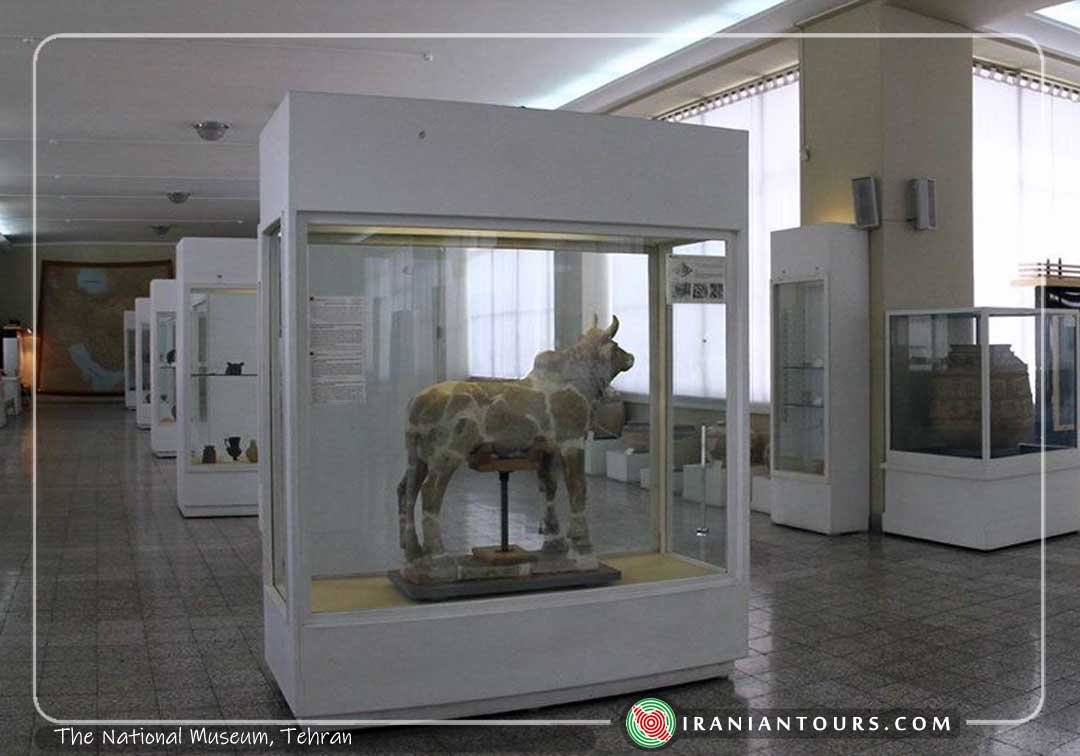The National Museum
- The most comprehensive Archaeological Museum in Iran
- Address : 30 Tir St., Imam Khomeini Ave., Tehran
- Opening Hours : 09;00-18:00 (Summer) / 09-17:00 (Winter)
- Entrance Fee : 50T (Ancient Iran Gallery) + 30T (Islamic Era Gallery)
- Historical Period(s) :
- Tel. : 021-66702061
- Recommended Time to Spend : 2 hours
- Tehran Province
The National Museum of Iran (Persian: Mūze-ye Melli-ye Irān) is located in Tehran, Iran. It is an institution formed of two complexes; the Museum of Ancient Iran (Mūze-ye Irān-e Bāstān) and the Museum of the Islamic Era (Mūze-ye Dowrān-e Eslāmī), which were opened in 1937 and 1972, respectively.
The institution hosts historical items dating back through preserved ancient and medieval Iranian antiquities, including pottery vessels, metal objects, textile remains, and some rare books and coins. The items are exhibited in chronological order giving a comprehensive historical view of the country.
The brick building of the Museum of Ancient Iran was designed by French architects André Godard and Maxime Siroux in the early 20th century and was influenced by Sassanian vaults, particularly the Taq Kasra at Ctesiphon. Its construction, with an area of about 11,000 square metres (13,000 sq yd), began in 1935 and was completed within two years by Abbas Ali Memar and Morad Tabrizi. It was then officially inaugurated in 1937.
Museum of the Islamic Era, part of the National Museum of Iran. The Museum of Islamic Era was later built with white travertine on the grassy grounds of the Museum of Ancient Iran. It has gone through quite a few hasty interior changes and was still being remodeled when the 1979 Revolution swept the country.
While the Museum of Ancient Iran always had a clear mandate to show archaeological relics, as well as some rare medieval textiles and rug pieces, the newer complex began to also feature the exquisite Amlash pottery from prehistoric Caspian Sea regions of Iran. This followed some modern works and the repeated gutting and remodeling of the interior.
The Museum of Ancient Iran consists of two floors. Its halls contain artifacts and fossils from the Lower, Middle, and Upper Paleolithic, as well as the Neolithic, Chalcolithic, early and late Bronze Age, and Iron Ages I-III, through the Median, Achaemenid, Seleucid, Parthian, and Sassanian eras.
The newer complex consists of three floors. It contains various pieces of pottery, textiles, texts, artworks, astrolabes, and adobe calligraphy, from Iran’s post-classical era.





